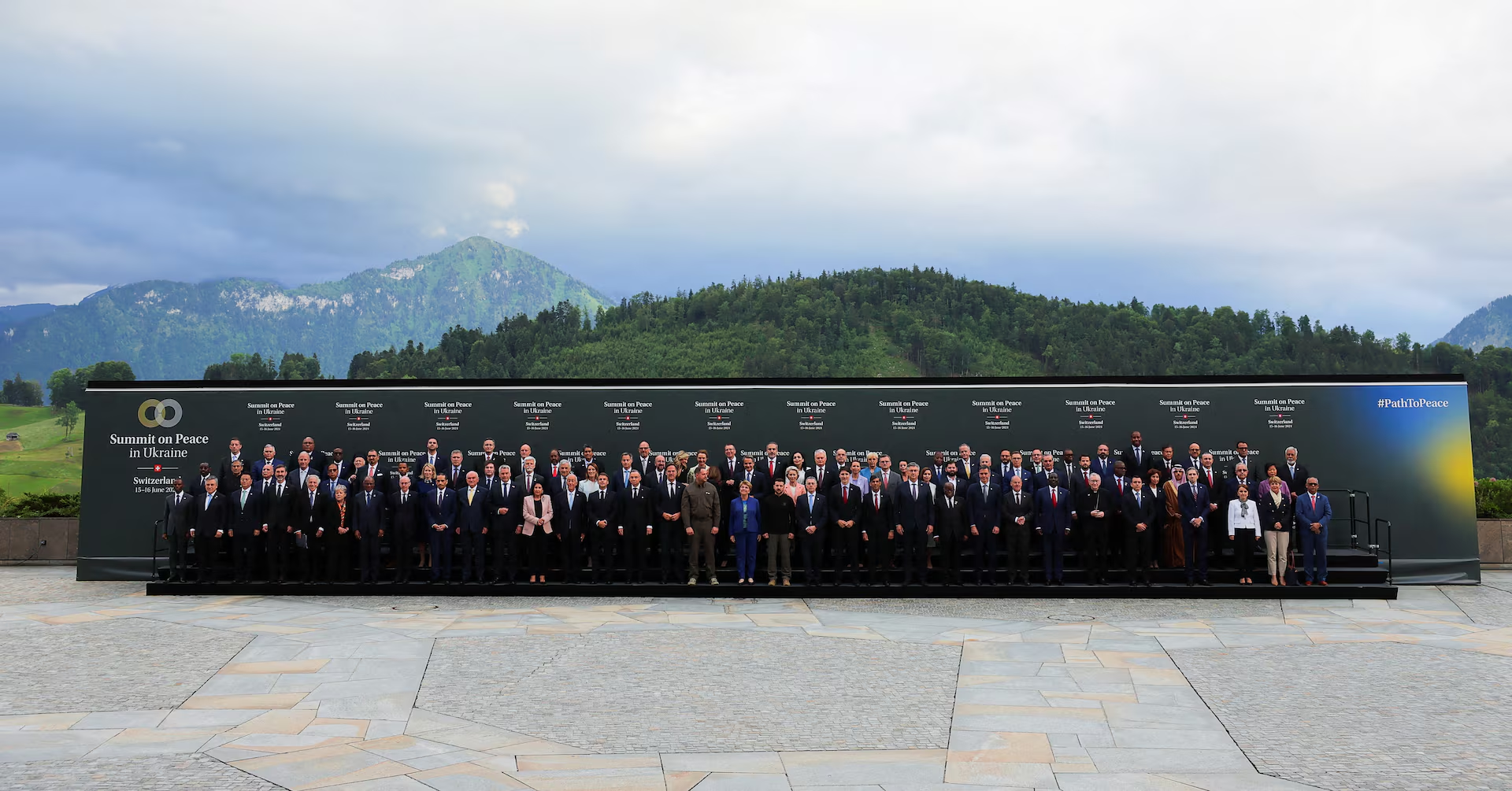The final communiqué, approved during the Summit, focused on three main issues discussed in Switzerland.
However, it also has several strong points:
- Recognition of Russia as the Aggressor: Russia is acknowledged as the aggressor country, and the war in Ukraine continues to be called a “war” rather than softer terms like “conflict” or “crisis,” as China has advocated.
- Support for Ukrainian Peace Formula: The communiqué noted that the Summit considered the Ukrainian Peace Formula and the proposals aligned with international law and the UN Charter. For Ukraine, this means respect for its territorial integrity, sovereignty, and internationally recognized borders.
Despite Zelenskyy’s Peace Formula comprising ten points, the document only included topics on the agenda. Notably, it emphasized that Ukraine’s nuclear power plants, including the temporarily occupied Zaporizhzhia Nuclear Power Plant, should “operate safely and securely under full sovereign control of Ukraine and in accordance with IAEA principles and oversight.”
- Trade and Maritime Security: The signatories highlighted the need for secure commercial shipping and access to seaports in the Black and Azov Seas. These points are crucial for Ukraine, as the document implies the necessity of Ukrainian control over currently occupied areas without explicitly mentioning de-occupation.
- Prisoner Exchange and Return of Deported Children: The countries advocated for the complete return of Ukrainian prisoners of war, children, and civilian hostages held by Russia.
The communiqué also mentioned that ensuring sustainable peace would require “engagement and dialogue” among all parties, indicating that future Russian participation is not ruled out even at the documented level.
Divergence of Opinions
The communiqué revealed a split between the views of Western countries and the Global South. Although it did not address military efforts, a special tribunal for Putin and Russian military leadership, or reparations from Russian assets, not all Summit participants signed the document.
Ukraine did not see signatures from BRICS member countries, including Brazil, India, UAE, South Africa, and Saudi Arabia. Additionally, Iraq, Bahrain, Libya, Colombia, Rwanda, Mexico, Indonesia, Jordan, and Armenia also refrained from signing.
Currently, 16 countries have refused to sign, but the document remains open for signature even by states that did not participate in the Peace Summit. Recently, the Organization of American States, comprising 32 countries from South and North America, and the Caribbean island nation of Antigua and Barbuda joined the document.
“This shows that our Peace Formula and our vision of a just and lasting peace are shared by all continents and regions of the world – from Europe to the Caribbean. And this coalition will only grow,” stated Volodymyr Zelenskyy.
Challenges Ahead
Despite being pro-Ukrainian, the communiqué does not cover all of Ukraine’s aspirations, demonstrating a lack of support from countries outside the political West and not under its “protection.”
Mercedes Sapuppo, an expert from the Atlantic Council think tank, emphasized that the lack of support from leading Global South countries “significantly weakened the potential impact of the Summit.”
“This indicates that Ukrainian diplomats still have a lot of work to do on a bilateral level,” she noted.


